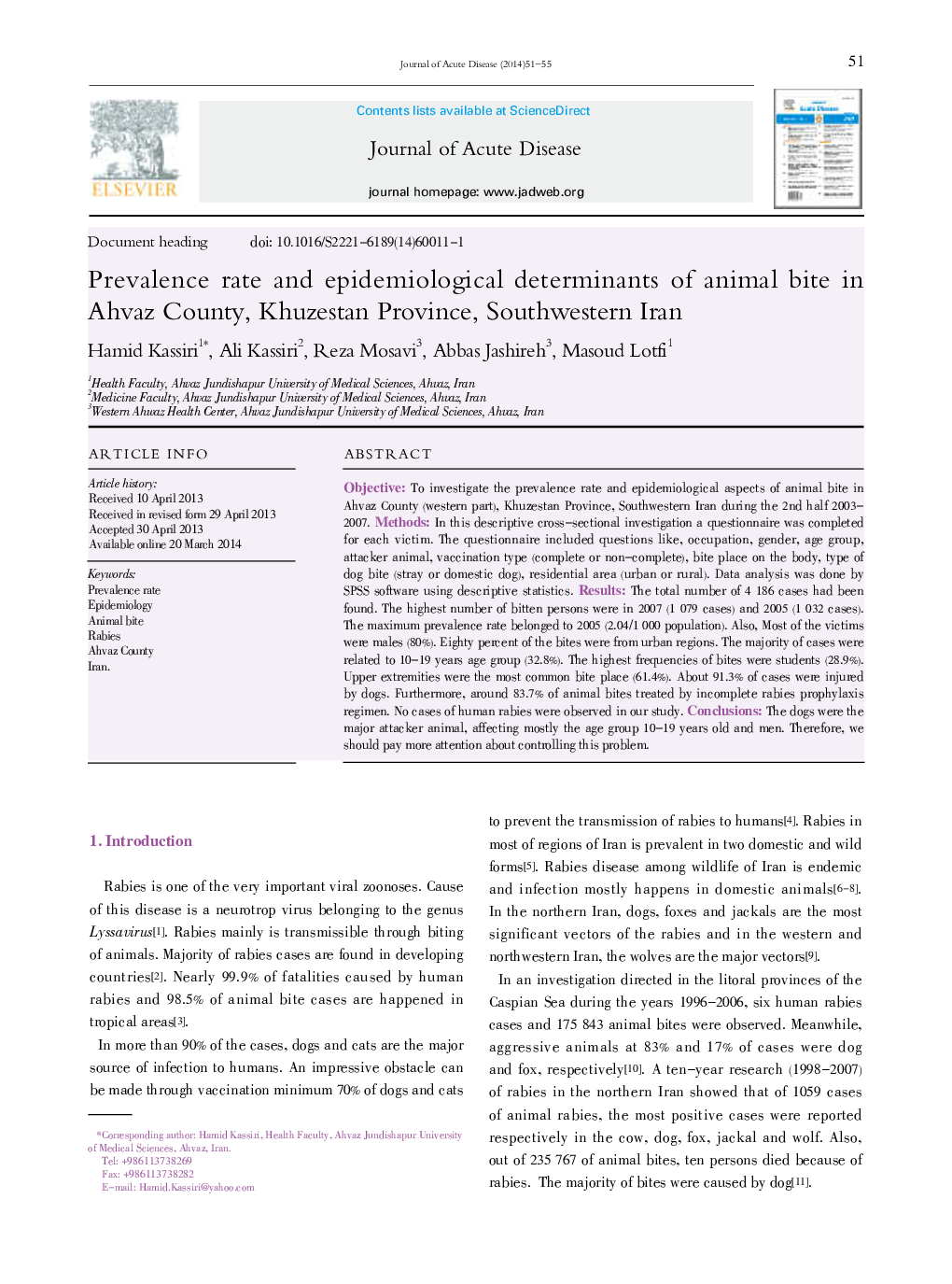| Article ID | Journal | Published Year | Pages | File Type |
|---|---|---|---|---|
| 3475317 | Journal of Acute Disease | 2014 | 5 Pages |
ObjectiveTo investigate the prevalence rate and epidemiological aspects of animal bite in Ahvaz County (western part), Khuzestan Province, Southwestern Iran during the 2nd half 2003–2007.MethodsIn this descriptive cross-sectional investigation a questionnaire was completed for each victim. The questionnaire included questions like, occupation, gender, age group, attacker animal, vaccination type (complete or non-complete), bite place on the body, type of dog bite (stray or domestic dog), residential area (urban or rural). Data analysis was done by SPSS software using descriptive statistics.ResultsThe total number of 4 186 cases had been found. The highest number of bitten persons were in 2007 (1 079 cases) and 2005 (1 032 cases). The maximum prevalence rate belonged to 2005 (2.04/1 000 population). Also, Most of the victims were males (80%). Eighty percent of the bites were from urban regions. The majority of cases were related to 10–19 years age group (32.8%). The highest frequencies of bites were students (28.9%). Upper extremities were the most common bite place (61.4%). About 91.3% of cases were injured by dogs. Furthermore, around 83.7% of animal bites treated by incomplete rabies prophylaxis regimen. No cases of human rabies were observed in our study.ConclusionsThe dogs were the major attacker animal, affecting mostly the age group 10–19 years old and men. Therefore, we should pay more attention about controlling this problem.
